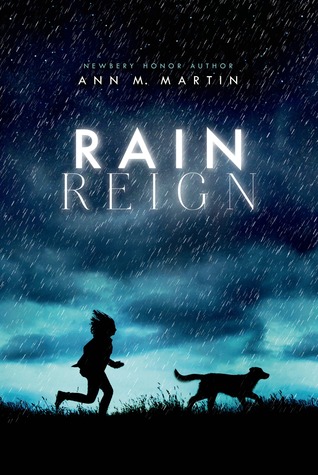Rain Reign
Written by Ann M. Martin
Published by A Fiewel and Friends Book an Imprint of Macmillan, 2014

Lexile Level: 720L
Age Range: 8-12 years
Page Count: 240
Suggested Delivery: Small Group Read
2015 Schneider Family Book Award Winner, Middle Grade
Key Words: Courage, Perseverance, Love, Fiction, Homonyms
Internet Resources:
Word Confusion
http://www.funbrain.com/whichword/
This game asks students to pick which word from a pair of homophones fits in the sentence. This would be a great website to give the students practice with homophones after giving a mini lesson on the difference between homophones and homonyms prior to reading the book.
Ann Martin Webpage
https://www.scholastic.com/annmartin/about/index.htm
This would be great for the students to explore after reading the book as they could read what she has to say about her writing and writing in general by looking at the answers to the questions people have asked her. They could see why she did certain things in her writing and they could take some of what she said to apply it to their writing.
Vocabulary:
- Homophone: words that sound alike.
- Homonym: a word that has multiple meanings.
- Diagnosis: figuring out what is wrong with something.
- High Functioning Autism: people with a brain issue that makes it harder for them to understand the world around them who can act almost the same as everyone else.
- Asperger's Syndrome: another name for high functioning autism.
- Hurricane: a big storm with very fast winds.
- Use this book in combination with a media unit where the kids make their own newspaper or flyers for something, In the book Rose has someone come interview her and then write a story in the newspaper about her so that she can find her dog. Students could practice interviewing someone and then they could write a column that they could all collectively put in a class newspaper.
- Rose in the story has to give up something that is very important to her. Something that would help the students to connect to Rose would be to have them pick something in their life that they would not want to live without. After that have them, if it was a person that they would not want to live without, write a letter to that person explaining why they would not want to live without them. If it was an object, that they feel they would not want to live without, have them write a page explaining why it is so important to them.
- Use this book to explore the different developmental disabilities and learning disabilities that students may have and how each of these impact someones learning in and out of school using Rose as an example for someone with autism.
- Before: Give a mini lesson on the difference between a homophone and a homonym. This is important because in the story the author uses the word homonym when they mean homophone. It is important that the students are aware of the difference between the two before they read so that they do not confuse the two later on after reading the book.
- During: Have students stop after every 4 chapters and write a short summary of what happened, this will help them to work on their summarizing skills. Make them aware of the text feature of the chapter headings in this book as each one tells you what the chapter is about.
- After: Have each student pick which scene that they think was the most important and then have them draw it. After everyone in the group has finished drawing have them share with each other what they have drawn and explain why they thought it was the most important scene.
Have students write a journal entry that Rose might have made for each of the 4 sections in the book. Ask the students to pay attention to how Rose might have been feeling based on what was going on in that section of the book. This will show their inferential comprehension as Rose tries to not talk about how things made her feel in the story.